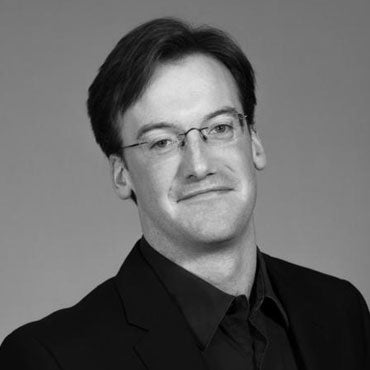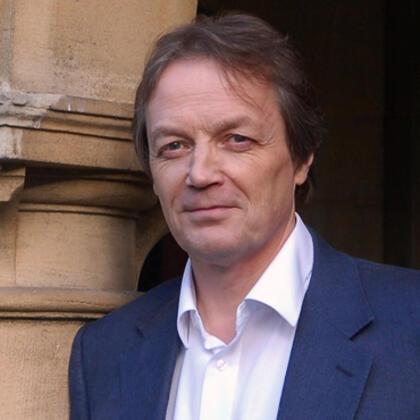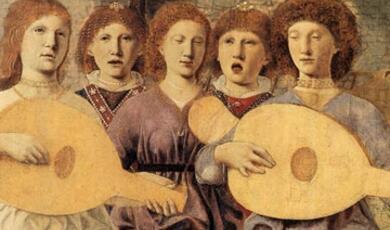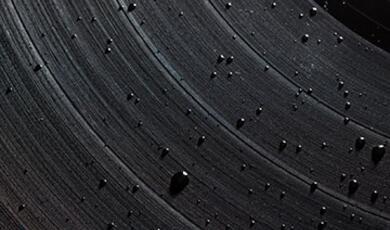The Christian Singer: Charlemagne and Beyond
Share
- Details
- Text
- Audio
- Downloads
- Extra Reading
In the year 754 the first pope ever to cross the Alps came to a small chapel in what is now northern France and prostrated himself before the king of the Franks, beseeching him for military aid. The pope came with singers from the Roman song school. When he and the king signed ‘treaties of peace’ together the foundations were laid for what has long been known as Gregorian (or better ‘Frankish-Roman’) Chant. This is the music of a transalpine Western Europe beginning o revive, albeit very slowly, after the withdrawal of Roman imperial power. No activity marked this broader horizon more potently, or more often, than the daily celebration of Gregorian chant by priests, deacons and singers.
Download Text
16 February 2017
The Christian Singer:
Charlemagne and Beyond
Professor Christopher Page
I began these lectures with the music of the first Christians, moved on to the beginnings of a ministry of singing in the second lecture, then turned to the cathedral schooling of such singers in the third. The last lecture was devoted to Rome. Now, for the fifth and penultimate lecture we turn to what is arguably the destination of the whole series: the emergence of the music commonly known as ‘Gregorian chant’.
So we begin with an example of it: Factus est repente for Pentecost Sunday: ‘And suddenly there came from heaven a sound like a mighty rushing wind, in the place where they were sitting, alleluia. And they were all filled with the Holy Spirit, and announced the great things God had done, alleluia, alleluia’. You have the melody from in a modern version of medieval square notation on your handout.
Factus est repente
The first page of your handout shows the beginning of that particular chant taken chant from a manuscript of the late tenth century. It was copied before the invention of staff notation, of course, so what you see are delicate pen strokes, the neumes, which draw the outline of the melody, reminding the singer how it rises and falls and showing how the elements of the melody are apportioned to the syllables of the text. As I have mentioned several times in the course of these lectures, the preferred term for Gregorian chant amongst specialists is now ‘Frankish-Roman’ chant. It is now widely agreed that the music began to emerge sometime after 750, and that it is produced by a complex interaction between the plainsong of Rome and the music sung in the most powerful kingdom of northern Europe in the early middle ages: the kingdom of the Franks. The Franks have given their name, of course, to France, and the story of how they emerged from the military conflicts of the late Roman world to become rulers of what would become France and Germany gives shape to the history of the early Middle Ages. Their kingdom is still with us, you might say, for in territorial terms, what is the Franco-German motor of the European Union if not the domain of the Franks? The organization now known as the European Union was founded in 1957, under a different name, comprising Belgium, France, Germany, Italy, Luxembourg and the Netherlands: nations whose lands map out, with unnerving fidelity, the empire of the greatest Frankish ruler of all: Charlemagne.
How did this Gregorian or Frankish-Roman music come into existence? Why should we care? My answer to that would be that we are looking into the origins of our music in the West. How wide should the compass of a vocal melody be before it ceases to lie comfortably in the voice? How long should a musical phrase last before there is a pause for breath, and how should the arrival of that moment be signalled according to the weight of the pause? How should a melody set the balance between stepwise movement and leaps? Gregorian plainsong offered persuasive answers to all those questions, and composers absorbed them until the reformation and in many places long after. Look again at the medieval musical notation on your handout, from a tenth century manuscript. It comes from an entirely different world, in many ways violent and primitive, albeit driven by high ideals; yet despite the wind of so many centuries sounding in our ears, despite the fact that the manuscript comes to us from a world of stone abbeys, shrunken Roman cities and stockade forts, it seems to me, and perhaps to you, that the music it records is often wonderfully intelligible. In the chant that we just heard, and which is recorded in that manuscript, the text announced the great mystery of Pentecost and the miracle that began the apostles’ task of taking the Christian message out into the world. Listen how dramatically the melody announces the miraculous event, and the sudden wind from heaven, with an almost fanfare like repetition of the interval of a fifth:
Factus est repente….
It is now absolutely clear what the musical territory of this chant, so to speak, is going to be. And then a sound, a sonus, comes from heaven; listen how the music decorates that word sonus, ‘sound’, carrying it up to the peak of the melody:
De caelo sonus
And putting it together: Factus est repente…. De caelo sonus
How did this music emerge? In my last lecture, as you may remember, I described a pope making journey: he went in a cavalcade through the streets of Rome to the great church where he was due to celebrate mass. Today, we follow another pope as he moves from place to place, but this time the setting is very different: the Alpine passes in the depths of of a white and frozen winter. It is in every way a historic moment. The year is 754, and this is the first time that a pope, a vicar of Saint Peter, has ever come onto the North European Plain. For that is his destination: the grasslands of Champagne in what is now northern France. This is, as you might expect, a political journey, though that word ignores the great spiritual consequence of what was taking place and the direct involvement, as we shall see, of Saint Peter himself. For a considerable while now Rome has been the western extreme of the surviving eastern Roman Empire, or if you prefer Byzantium. But this Pope, Stephen II, wishes to realign Rome with the Latin west, partly because he feels he has no choice. The Byzantines are preoccupied in their conflict with Arabs, Slavs and Avars, among others, and are therefore increasingly unable or unwilling to ensure the welfare and security of their imperial subjects in Rome. Earlier popes had showed themselves ready to patch up alliances and to make friends wherever they could find them; but in 753, however, Pope Stephen II decided to follow a policy that had been in the minds of the popes for more than a hundred years and which reflects the realities of a world that is now in so many respects post Roman. He would turn from the surviving Roman Empire in the East to the most powerful people on the grasslands of Northern Europe: the Franks.
So the pope came to what is now a bleak and rather desolate hamlet of Champagne not far from the town of Vitry-le-François, and a place now called Ponthion. In 754 it was the site of a royal villa or palace farm. The Frankish king the pope met there bore the name of Pippin, and was the third of his line to bear it; Pippin brought with him a young lad of six or seven whose name was Charles. He will become the emperor we know as Charlemagne. (Pippin could not write; the first page of your handout shows his mark). So picture the scene. The king and the pope met in the chapel of the villa in what must have been, by the standards of the time, a relatively intimate meeting. Pope Stephen was accompanied by only two deacons and two presbyters, no more. According to one account, he and his clergy lay prostrate upon the ground, the pope having ash upon his head and wearing a penitential shift of linen. He would not rise until Pippin and several other Franks helped him up. The fact that this was all happening in a palace farm to the braying of bullocks, or the lowing of cows, should not obscure the extraordinary character of what was going forward: something between a natioby the solicitude and labour of our father King Pippin of honourable memory, and by the coming into Gaul of the most reverend and holy man Stephen, prelate of the city of Rome, it has also been joined to it in the order of chanting, so that there should be no discrepancy in that order between churches sharing an identity of belief...
For Charlemagne, it seems that unity of rite and chanting with Rome is a means to show exceptional friendship by taking care to go beyond the call of duty, as a friend will often do. Those liable to construe a dissimilar manner of singing as a mark of dissent in matters of doctrine between the Franks and Rome will now be confounded.
Let us now hear another chant from the Christmas-Epiphany season which enfolded the meeting at the palace farm between Pippin and the Pope. This is the Introit Dum medium silentium: ‘While a profound silence enveloped all things, and night was in the midst of her course, your all powerful word, O Lord, came down from the royal throne’:
Dum medium silentium
You need more than friendship to create a new repertoire of Frankish-Roman chant for the entire year! How was the work done, and how did it begin? The musical sources cannot tell us, though they are infinitely suggestive, for they are all too late. Strictly speaking, there are no readily decipherable traces of genuinely Roman chant, such as we heard in my last lecture, until the eleventh century, long after the events we are describing. There is no decipherable record of Gregorian chant until the ninth century, again too late. The two musical repertories, Roman and Frankish-Roman, contain many chants that plainly have a historical relation to one another, but it remains a matter of controversy what that relation might be.
Unbelievable thought it may seem, it is possible to shine a light on the very beginning of the process before the musical sources were thought of. We know from various letters that at some time in the 760s a singer named Simeon was sent from Rome by the pope, now Paul I, to the cathedral of Rouen. My guess is that he was an easterner, to judge by his name, perhaps a Greek or a Syrian. (God knows what he made of the rain and cold in Rouen, down the Seine from Paris). Simeon’s task was to teach his Frankish hosts the Roman ‘music of psalmody’ or psalmodii modulatio. This visiting professor of plainchant came on high authority, for he was nothing less than the second in command of the Roman schola cantorum and was eventually recalled to take over. The choice of Rouen for his work as a teacher was by no means fortuitous; the bishop there, Remedius, was Pippin’s brother, or more correctly his half-brother; most major enterprises of the great in this period were in some sense family matters.
What were the Franks trying to achieve by inviting a Roman singer to their homeland? There was no form of musical notation then in existence which would allow Simeon to write all the Roman melodies down and then leave for home, going back to his wines and olive oil. And how did they even talk to one another? Simeon certainly did not speak Frankish, and the singers he taught will have known little or no Greek, let alone any other eastern language. Did they use Latin? At this date, what we might call the ‘Latin’ of Rouen was actually an emerging form of French, and Simeon would certainly not have understood that.
So Frankish dealings with Simeon must have been essentially empirical. The sounds of the Roman music were held before Frankish ears, so to speak, to produce a human archive of memory, but one that was liable to be constantly influenced by the Franks’ own, indigenous chanting. And yet this astonishing, in some respects quixotic task was performed with success. To compare the melodies of many chants as as they appear in the earliest manuscripts of Gregorian plainsong, from the Alpine monastery of Gaul to the cathedral on the bleak cliff of Laon in northern France, is to find a remarkable degree of accord between them. You are hearing this afternoon, the sound of the medieval Christian West at worship.
Here and there, we can glimpse the ways in which the melodies were passed from one church to another to secure this remarkable result. Let us follow the career of one singer who was involved in the work. He became the bishop of a cathedral with assiduous chroniclers, and as a result the broad outlines of his life can be traced. His name is Aldricus and eventually became bishop of Le Mans. Cantors had become bishops before but the biography of Aldricus shows something quite different. The Carolingian sponsorship of Frankish-Roman chant had turned those who were expert in its performance into a reservoir of literate talent, paternalistically nurtured in the royal chapels, notably at Aachen, or in the stalls of Metz cathedral, so that they might one day become an instrument of royal government by serving as the Emperor’s man in a strategic see as bishop.
Aldricus was presented to the Emperor and his son Louis in 812 when he joined the circle of young men being raised in the imperial household, the nutriti. After nearly a decade at Aachen and elsewhere, he conceived a desire to live the common life of cathedral canons following a quasi-monastic rule. Charlemagne’s son Louis the Pious, who now reigned as Emperor, assigned a palce in the cathedral of Metz to Aldricus and to the pair of clerics he kept with him, but the Emperor also tried to discourage him from leaving. Perhaps he wished to make him an imperial chaplain and keep him on hand for the many services he could render at court. But this was not to be. Aldricus took up his place and for the next eleven years he studied ‘Roman chant, grammar and Holy Scripture’. His ascent during these years was swift, for he became senior cantor and was such a fine teacher of chant and grammar that he assumed the title of primicerius scholae. In 832, he achieved a conspicuous honour when Louis chose him to be his confessor, and in the same year he was consecrated bishop of Le Mans. This was a place where the Carolingians needed a friend, for they had no deep roots there.
At Le Mans Aldricus constructed an aqueduct and a cloister, ‘where the canons could live according to Rule and in a canonical fashion’. Since they had hitherto gone ‘wandering in the city, in various houses, to the detriment of the divine office’ were thus constrained. Aldricus went on to build upper rooms and cellars for storage. ‘Still this was not enough’; he built a further series of houses, gave the cloister ‘a new and double roof’ and set up more dwellings for the use of the brothers. As a former cantor of Metz and relative of the Emperor, Aldricus would surely have wished these reforms of the community at Le Mans to include implantation of the Frankish-Roman chant he learned at Metz. And that, I suspect, is how the great work was done.
© Professor Christopher Page, 2017
This event was on Thu, 16 Feb 2017
Support Gresham
Gresham College has offered an outstanding education to the public free of charge for over 400 years. Today, Gresham College plays an important role in fostering a love of learning and a greater understanding of ourselves and the world around us. Your donation will help to widen our reach and to broaden our audience, allowing more people to benefit from a high-quality education from some of the brightest minds.


 Login
Login









